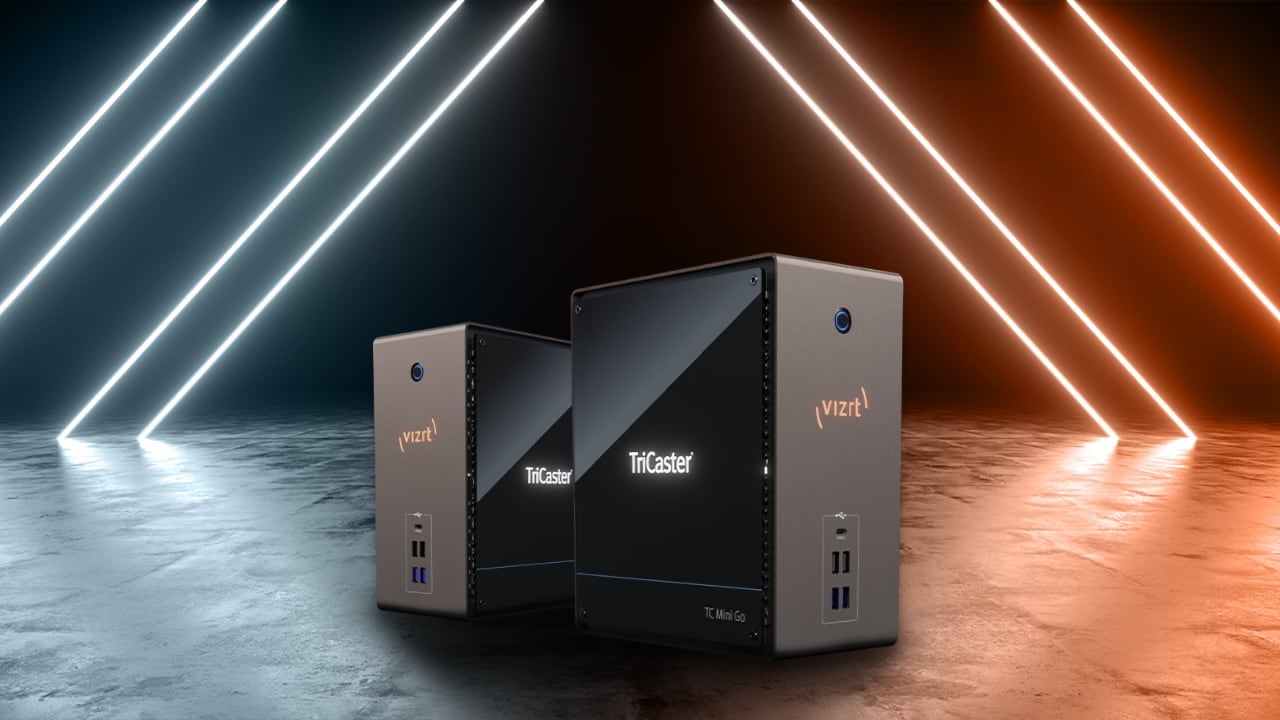
A new virtualised TriCaster and a new $5k TriCaster Mini Go pushes the entry level to the popular and production proven TriCaster system lower than ever.
Let’s start with the new TriCaster Mini Go, which is billed as Vizrt’s entry-level TriCaster for streamers and content creators of all kinds to add broadcast quality functionality to their video creations. Priced at $4995, it offers USB, NDI and SRT connectivity, 4 inputs, 2 M/Es, and mix outputs at HD resolution.
Perhaps more revolutionary yet, though, is the cloud-based TriCaster Now, which offers virtualised access to the tried and trusted TriCaster software without hardware tied to a specific location. It offers the usual flexible and scalable cloud benefits, connecting NDI and SRT alongside a variety of IP technologies, and other cloud sources streaming them to any destination.
According to Vizrt, the whole system can be deployed and ready to produce in under 10 minutes and switched off when no longer needed – all without users needing their own cloud infrastructure, saving on costs and carbon, but increasing efficiency.
And to ensure TriCaster offers something for everyone, no matter where they are on their live production journey, the enterprise-grade 4K cloud-based switcher, Viz Vectar Plus, joins the TriCaster line as TriCaster Vectar. Available to deploy to customer’s own cloud infrastructure, TriCaster Vectar will soon offer an array of advanced features including increased bit-depth support, extended bitrate stream quality, and more.
With these additions Vizrt now offers customers two paths to production in the cloud; simple and standardised with TriCaster Now and customisable and powerful with TriCaster Vectar. It’s a nice choice to have and it will be interesting to see how it evolves from here.
From the horse's mouth
Talking of which, we had the chance to talk to Michael Hallén, president and CEO of Vizrt, in the days before the new announcement. One of the first things we asked was about the statement in the press release at the start of the week when they announced the demise of NewTek, the bit that says: “To better meet the needs of end-users and customers, Vizrt will extend its product portfolio and launch a new entry-level video production system for streamers and content creators, and new cloud live production systems.”
Is the Tricaster Mini Go the first entry in what might be a new ecosystem?
“Yes,” he says simply. “The idea with this is obviously that it is an entry level TriCaster, but you can expand on it, and you can basically add stuff as you move forward. I think it's quite a tempting offering to have an entry level machine where you can add HTML 5 graphics and, as you grow, you add more advanced TriCaster functionality. But it's kind of a mission for us that we can start with the professional, fairly small streamer and stretch all the way to the higher end. That's a good vision to have.
“We are expanding on the Tricaster family; not only at the entry level but also at the more advanced level; both ends,” he continues referencing the new cloud-based service and a pivot towards a subscription based business model. “Some customers want to get going but do not have the funds, but with this they can start small and they can grow. It's helping some customers get going quicker.”
The subscription mode is an interesting one, but one that is normally more associated with smaller companies and individual users, not so much the large national broadcasters that Vizrt often deals with.
“I think that most customers are expecting this to be the business model of the future,” says Hallén. “And yes, it will be a fairly long transition for some of the really big ones, but it is happening because it gives predictability in both directions; it gives predictability and flexibility for the customer to spin things up and down. And also it gives me visibility on my revenue stream as well. So it's good for everybody.”
As for the future of NDI, unsurprisingly given that its adoption rates remain impressive across all industries not much is changing.
“It's a different animal in many respects; it serves all customers in our various sectors, but it also serves video outside of broadcast and Pro AV is a bit of a different beast again,” says Hallén. “We are investing in NDI in many different ways so it stays up to date and accurate. And, based on customer feedback, we add various functions and features into it. But most of all we try to keep it stable and accessible and enjoy the continued high adoption rates.”
Tags: Production Cloud


Comments